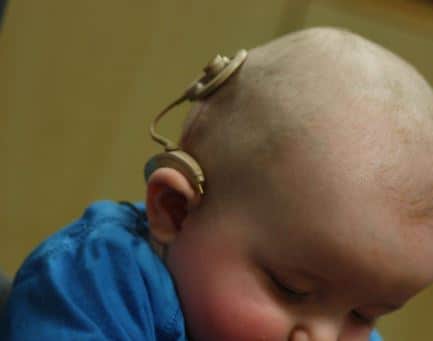European engineers from Germany, Switzerland, and Austria have invented a new type of cochlear implant. Unlike traditional cochlear implants that stimulate auditory nerves with electrical fields, the prototype device uses laser pulses to trigger auditory signals from hair cells in the inner ear.
The benefit, say the researchers, is a much more focused device that could lead to significant performance improvements over current technology.
New Cochlear Implant Technology
According to researchers, using an array of near-infrared lasers can produce a soundwave using what’s called the optoacoustic effect. In their prototype, tiny vertical cavity surface-emitting lasers, which pulsate light at a spectrum of 1.4 to 1.9 microns, act upon the fluid within the cochlea.
Infrared light is absorbed by the liquid inside the cochlea. A small fraction of the liquid will expand due to heat. If that happens rapidly enough, it generates a soundwave inside the duct of the cochlea. This stimulates or moves tiny hair cells located there, which in turn sends a signal along the auditory nerve which the brain understands as sound.
Tiny laser arrays have been developed and tested on guinea pigs over the past three years. The results showed that they could generate action potentials, the signals carried by auditory nerves, using vertical laser light and the optoacoustic effect.

Shown above: 2 vertical cavity surface-emitting lasers used in prototype optical cochlear implant, next to matchstick for scale. Image courtesy CSEM via IEEE.
While the results are promising, the technology is still in the early stages. Design challenges remain, such as power consumption and overall size. Currently the device is slightly smaller than a nine-volt battery.
Source: IEEE, Digital Trends; image courtesy wikimedia commons







